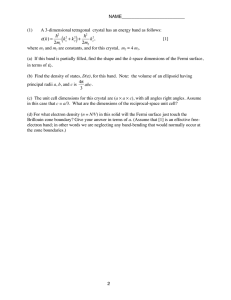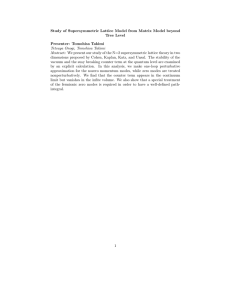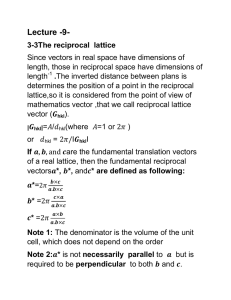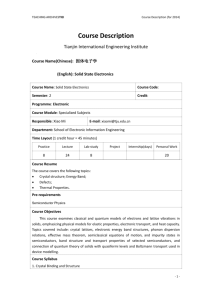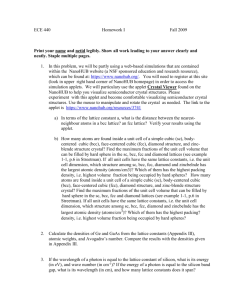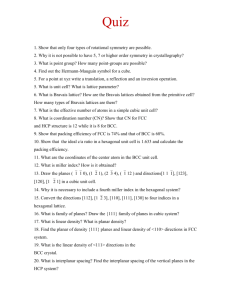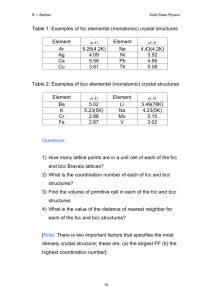Handout - Concepts review, part 1
advertisement
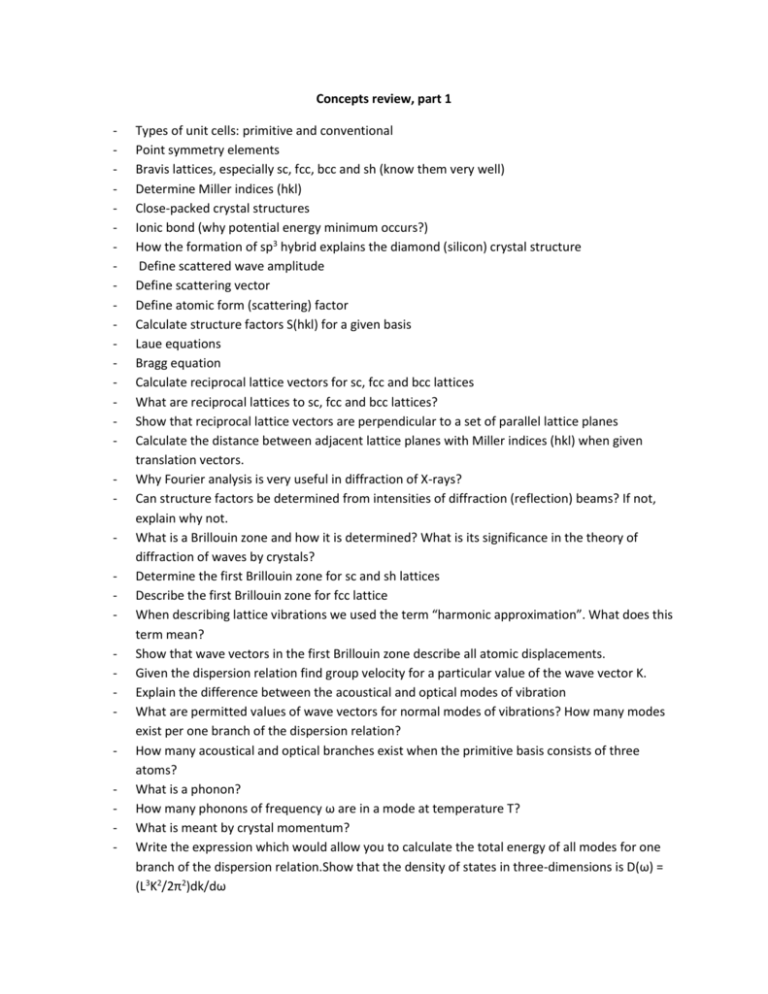
Concepts review, part 1 - Types of unit cells: primitive and conventional Point symmetry elements Bravis lattices, especially sc, fcc, bcc and sh (know them very well) Determine Miller indices (hkl) Close-packed crystal structures Ionic bond (why potential energy minimum occurs?) How the formation of sp3 hybrid explains the diamond (silicon) crystal structure Define scattered wave amplitude Define scattering vector Define atomic form (scattering) factor Calculate structure factors S(hkl) for a given basis Laue equations Bragg equation Calculate reciprocal lattice vectors for sc, fcc and bcc lattices What are reciprocal lattices to sc, fcc and bcc lattices? Show that reciprocal lattice vectors are perpendicular to a set of parallel lattice planes Calculate the distance between adjacent lattice planes with Miller indices (hkl) when given translation vectors. Why Fourier analysis is very useful in diffraction of X-rays? Can structure factors be determined from intensities of diffraction (reflection) beams? If not, explain why not. What is a Brillouin zone and how it is determined? What is its significance in the theory of diffraction of waves by crystals? Determine the first Brillouin zone for sc and sh lattices Describe the first Brillouin zone for fcc lattice When describing lattice vibrations we used the term “harmonic approximation”. What does this term mean? Show that wave vectors in the first Brillouin zone describe all atomic displacements. Given the dispersion relation find group velocity for a particular value of the wave vector K. Explain the difference between the acoustical and optical modes of vibration What are permitted values of wave vectors for normal modes of vibrations? How many modes exist per one branch of the dispersion relation? How many acoustical and optical branches exist when the primitive basis consists of three atoms? What is a phonon? How many phonons of frequency ω are in a mode at temperature T? What is meant by crystal momentum? Write the expression which would allow you to calculate the total energy of all modes for one branch of the dispersion relation.Show that the density of states in three-dimensions is D(ω) = (L3K2/2π2)dk/dω - Define the Debye cut-off frequency ωD. Explain why the Debye model works so well at low temperatures. Which of the two models: Einstein’s or Debye’s is more appropriate to calculate the contribution to heat capacity due to optical modes? Explain why? Explain the difference between umklapp and normal processes. Explain how the umklapp processes account for the finite thermal conductivity. Explain why the thermal conductivity of diamond is large at room temperature.

